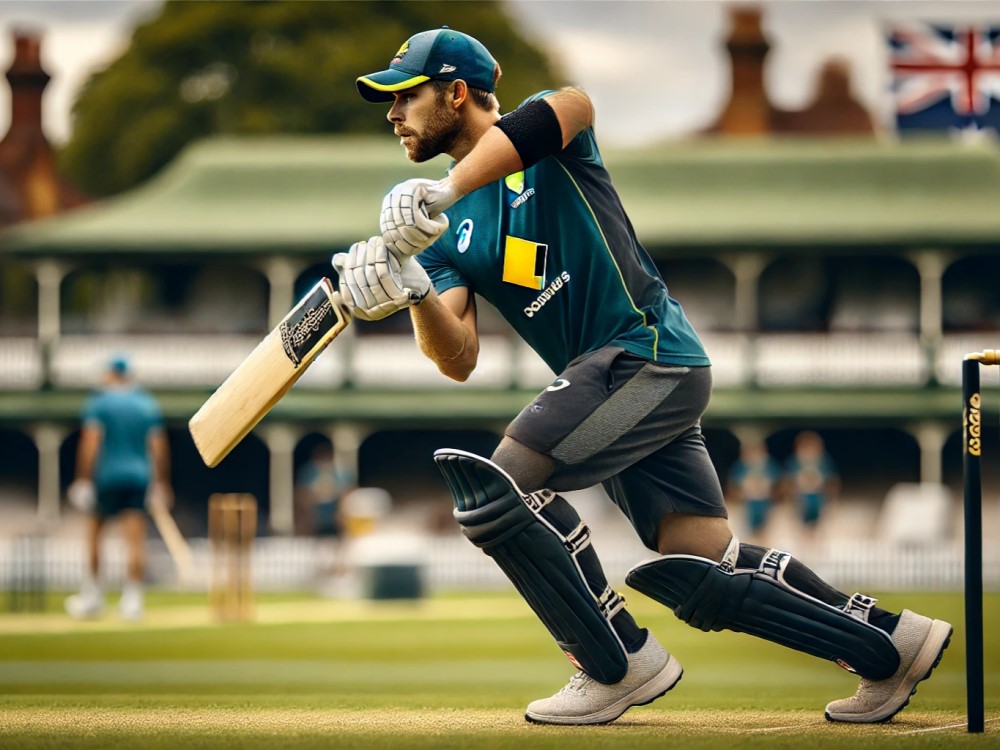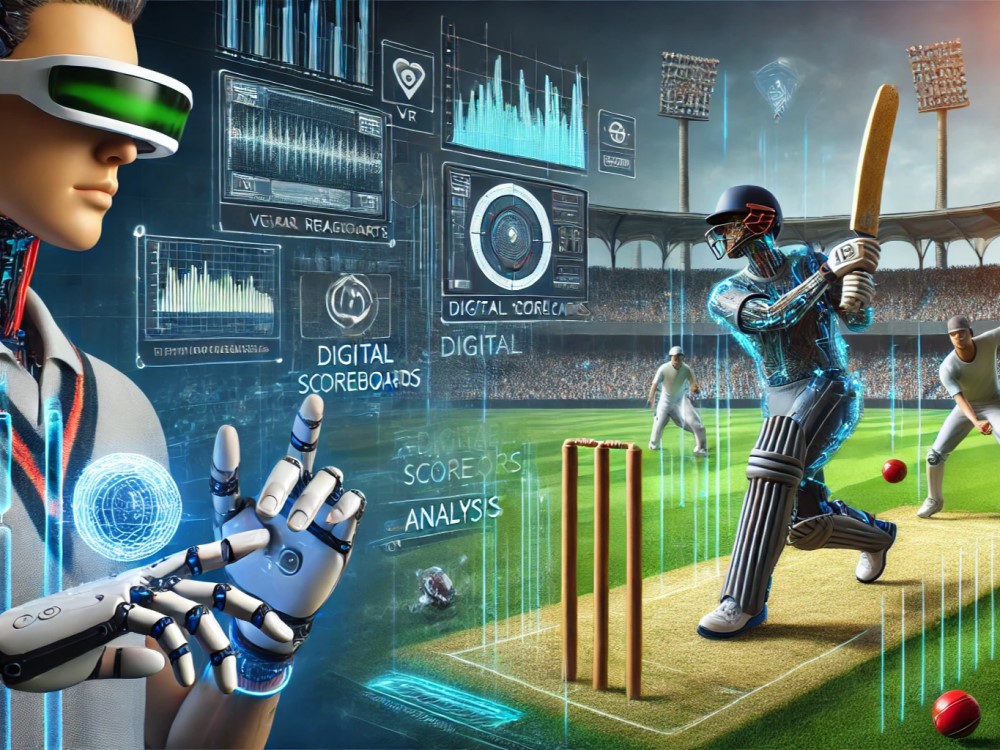
How Technology Has Transformed Cricket: From Pitch to Performance
Cricket, a sport steeped in tradition, has seen a remarkable transformation over the years, primarily driven by technological advancements. Understanding how technology has transformed cricket is essential to appreciating the modern game. From state-of-the-art equipment to sophisticated data analytics, technology has touched every aspect of cricket, enhancing both player performance and fan engagement.
One of the pivotal changes has been in the realm of player safety and gear. Innovations in cricket helmets and other protective gear have significantly reduced the risk of injuries, allowing players to perform at their best. Meanwhile, advancements in cricket bat manufacturing have led to more powerful and durable equipment, changing the dynamics of batting.
Off the field, technology has revolutionized how teams prepare and strategize. The use of video analysis and data analytics has enabled coaches and players to dissect every aspect of their game and their opponents’ strategies. This data-driven approach helps in fine-tuning techniques and developing game plans that maximize strengths and exploit weaknesses.
Moreover, technological advancements have brought fans closer to the game. The introduction of Decision Review System (DRS) has added a layer of fairness and accuracy to umpiring decisions, while also engaging viewers in the review process. For those keen on deeper insights, cricket podcasts and documentaries offer detailed analyses and behind-the-scenes looks at the sport.
The influence of technology extends to training as well. Players now benefit from cutting-edge fitness equipment and nutrition products designed to optimize performance and recovery. Innovative training methods and skill-enhancing drills have become integral to player development at all levels.
The transformation of cricket through technology has made the game more exciting, competitive, and accessible. As technology continues to evolve, it will undoubtedly further shape the future of cricket, ensuring it remains a beloved sport worldwide.
Advanced Pitch Preparation Techniques

The quality of the pitch is crucial in cricket, influencing the game’s outcome significantly. Traditionally, pitch preparation relied heavily on the experience and expertise of groundskeepers. However, technology has revolutionized this aspect of the game, making pitch preparation more scientific and precise.
One of the major technological advancements in pitch preparation is the use of soil analysis and turf management systems. Groundstaff now use sophisticated tools to analyze soil composition, moisture levels, and grass health. These tools help in creating pitches that are consistent and tailored to specific match requirements, whether they favor fast bowlers, spinners, or batsmen.
Irrigation technology has also seen significant improvements. Automated sprinkler systems and moisture sensors ensure that the pitch receives the optimal amount of water, maintaining the desired hardness and bounce. Additionally, under-soil heating systems can control the temperature of the pitch, making it possible to prepare high-quality playing surfaces in various weather conditions.
Another technological innovation is the use of high-definition cameras and drones to monitor pitch conditions. These devices provide detailed visual data that help groundskeepers make informed decisions about pitch maintenance. The result is pitches that offer fair and predictable playing conditions, enhancing the overall quality of the game.
The impact of these advancements is evident in the increased consistency and quality of pitches worldwide. Matches are now less likely to be affected by poor pitch conditions, leading to a more competitive and exciting game. Advanced pitch preparation techniques have thus played a crucial role in elevating the standard of cricket.
Hawk-Eye and Ball Tracking Technology
Hawk-Eye technology has become an integral part of modern cricket, providing unparalleled accuracy in ball tracking and decision-making. Introduced in the early 2000s, Hawk-Eye uses multiple high-speed cameras placed around the stadium to track the trajectory of the ball. This technology has transformed the way decisions are made in cricket, making the game more transparent and fair.
One of the most significant uses of Hawk-Eye is in the Decision Review System (DRS). When a team challenges an on-field umpire’s decision, Hawk-Eye provides a visual representation of the ball’s path, helping to determine whether the original call was correct. This technology has greatly reduced the number of incorrect decisions, enhancing the credibility of the game.
Hawk-Eye is also used to analyze player performance. Coaches and analysts use ball tracking data to study bowlers’ deliveries and batsmen’s responses. This detailed analysis helps in developing strategies and improving player techniques. For instance, bowlers can refine their deliveries to exploit batsmen’s weaknesses, while batsmen can work on their footwork and shot selection.
In addition to decision-making and performance analysis, Hawk-Eye has enhanced the viewing experience for fans. Television broadcasts now feature detailed ball tracking graphics that explain LBW decisions, predict the ball’s path, and provide insights into player performance. This level of detail makes the game more engaging and understandable for viewers.
Overall, Hawk-Eye and ball tracking technology have revolutionized cricket by improving decision-making, enhancing player performance, and enriching the viewing experience. The precision and reliability of these systems have made cricket a fairer and more analytical sport.
Wearable Technology and Player Performance

Wearable technology has had a profound impact on cricket, allowing players and coaches to monitor and enhance performance in real-time. Devices such as GPS trackers, fitness bands, and heart rate monitors provide valuable data that help in optimizing training regimes and preventing injuries.
GPS trackers are commonly used in cricket to monitor players’ movements and workload during training and matches. These devices provide data on distance covered, speed, and intensity of movements. Coaches use this information to tailor training programs to individual players’ needs, ensuring that they are in peak physical condition while avoiding overtraining.
Fitness bands and heart rate monitors track physiological parameters such as heart rate, sleep patterns, and calorie expenditure. This data helps players understand their bodies better and make informed decisions about their fitness and recovery. For example, by monitoring heart rate variability, players can determine their readiness for training and adjust their routines accordingly.
Wearable technology also plays a crucial role in injury prevention and management. Devices that monitor biomechanics and muscle activity can detect early signs of fatigue or strain, allowing for timely intervention. For instance, bowlers can use these devices to ensure that their bowling actions are consistent and not putting undue stress on their bodies. This proactive approach helps in reducing the risk of injuries and prolonging players’ careers.
In addition to performance and injury management, wearable technology enhances communication between players and coaches. Real-time data sharing allows for immediate feedback and adjustments, whether it’s during training sessions or in the middle of a match. This level of insight and responsiveness was previously unattainable, making wearable technology an invaluable tool in modern cricket.
The integration of wearable technology in cricket has significantly improved player performance and well-being. By providing detailed and actionable data, these devices help players achieve their full potential while minimizing the risk of injury. Wearable technology represents a new era of personalized and data-driven training in cricket.
Video Analysis and Coaching Tools
Video analysis has become a cornerstone of modern cricket coaching, offering detailed insights into player performance and technique. High-definition cameras and sophisticated software allow coaches to analyze every aspect of a player’s game, from batting and bowling mechanics to fielding and fitness.
One of the primary benefits of video analysis is the ability to break down complex movements into manageable segments. Coaches can use slow-motion replays and frame-by-frame analysis to identify technical flaws and areas for improvement. For example, a coach might use video analysis to examine a batsman’s footwork, ensuring that it is aligned correctly to play specific shots. Similarly, bowlers can analyze their deliveries to achieve optimal seam position and swing.
Advanced video analysis tools also enable side-by-side comparisons, allowing players to compare their techniques with those of top professionals. This visual learning approach helps players understand what they need to do to improve and reach higher levels of performance. By seeing how their actions differ from those of elite players, they can make precise adjustments to their technique.
Video analysis is not limited to individual performance; it also plays a crucial role in team strategy. Coaches use video footage to study opponents’ strengths and weaknesses, developing game plans that exploit these insights. For instance, analyzing an opponent’s batting patterns can help bowlers devise strategies to target specific vulnerabilities. Similarly, fielding placements can be optimized based on video analysis of batting tendencies.
The impact of video analysis extends to match preparation and review. Teams can review footage from previous matches to learn from their mistakes and refine their strategies. This continuous feedback loop helps in making informed decisions and adjustments, both during practice sessions and in live games.
The use of video analysis and coaching tools has revolutionized cricket training and performance. By providing detailed and actionable insights, these technologies have helped players and teams achieve new levels of excellence. The ability to analyze, learn, and adapt has made video analysis an indispensable part of modern cricket.
Smart Balls and Data Analytics

The introduction of smart balls has added a new dimension to cricket, providing real-time data on various aspects of ball movement and interaction with the pitch and batsmen. These balls, embedded with microchips and sensors, offer detailed insights into speed, spin, seam position, and swing, enhancing the analytical capabilities of players, coaches, and analysts.
Smart balls track the precise trajectory of each delivery, offering data on speed variations, seam alignment, and spin rates. This information helps bowlers understand the mechanics of their deliveries and make necessary adjustments. For example, a bowler can use data from a smart ball to refine their wrist position to achieve more consistent swing or spin. This level of detail was previously unattainable, providing bowlers with a powerful tool to enhance their performance.
Batsmen also benefit from the data provided by smart balls. By analyzing the movement of the ball, batsmen can develop better strategies to counter different types of deliveries. For instance, data on seam and swing movement helps batsmen anticipate and react to variations in the ball’s trajectory. This analytical approach enables batsmen to improve their shot selection and footwork, leading to higher levels of performance.
Data analytics, driven by information from smart balls, plays a significant role in strategic planning. Teams use this data to develop game plans, identify key moments in matches, and make informed decisions. For instance, understanding the conditions that favor certain types of deliveries helps teams decide when to introduce specific bowlers. Similarly, analyzing patterns in ball movement can inform field placements and batting strategies.
The integration of smart balls and data analytics has also enhanced the viewing experience for fans. Broadcasters use this data to provide detailed insights into the game, explaining the nuances of ball movement and player techniques. This enriched commentary makes the game more engaging and accessible, attracting a broader audience.
The advent of smart balls and data analytics has transformed cricket by providing unprecedented levels of detail and insight. These technologies have enhanced player performance, informed strategic decisions, and enriched the viewing experience, marking a new era in the analytical approach to cricket.
Stump Cameras and Microphones
Stump cameras and microphones have added a new dimension to the cricket viewing experience, bringing fans closer to the action and enhancing the overall entertainment value of the game. These technologies provide unique perspectives and sounds from the field, offering insights into player interactions and the dynamics of the game.
Stump cameras, placed within the stumps, offer a ground-level view of the pitch, capturing the bowler’s approach, the batsman’s stance, and the ball’s trajectory. This perspective provides viewers with a closer look at the critical moments of the game, such as close calls, dismissals, and boundary shots. The high-definition footage from stump cameras adds to the visual appeal of broadcasts, making the game more immersive and engaging.
Microphones embedded in the stumps and around the field capture the sounds of the game, including the impact of the ball on the bat, player conversations, and the reactions of the crowd. These audio enhancements provide an authentic and immersive experience, allowing viewers to hear the game as if they were on the field. The sounds captured by these microphones also play a crucial role in decision-making, particularly in the review of close catches and edges.
The combination of stump cameras and microphones enhances the storytelling aspect of cricket broadcasts. Commentators can use the footage and audio to provide detailed analyses and explain key moments in the game. This enriched commentary helps viewers understand the intricacies of the game, making it more accessible and enjoyable for both seasoned fans and newcomers.
Beyond enhancing the viewing experience, stump cameras and microphones have practical applications in the game. Umpires and officials use the footage and audio to review and verify decisions, ensuring greater accuracy and fairness. For instance, the audio from stump microphones can help detect faint edges in disputed catches, while stump camera footage can clarify run-out and stumping decisions.
The integration of stump cameras and microphones has significantly impacted cricket by enhancing both the viewing experience and the accuracy of decision-making. These technologies bring fans closer to the action and provide valuable tools for officials, contributing to the overall excitement and fairness of the game.
Virtual Reality and Training Simulators

Virtual reality (VR) and training simulators have revolutionized cricket training, providing players with immersive and realistic practice environments. These technologies offer unique opportunities for skill development, strategic planning, and mental conditioning, enhancing overall performance.
VR training systems create simulated match scenarios that allow players to practice their skills in a controlled yet realistic setting. Batsmen can face virtual bowlers with varying styles and deliveries, improving their ability to read and react to different types of bowling. Similarly, bowlers can practice their deliveries against virtual batsmen, refining their techniques and strategies.
Training simulators, equipped with advanced sensors and analytics, provide detailed feedback on player performance. These systems track movements, measure accuracy, and analyze biomechanics, offering insights that help players make precise adjustments. For example, a batsman can use a simulator to analyze their footwork and shot selection, while a bowler can study their release point and seam position.
One of the key benefits of VR and training simulators is the ability to replicate specific match conditions and scenarios. Players can practice facing particular bowlers or batting against specific field settings, preparing them for actual match situations. This targeted practice helps players build confidence and improve their decision-making skills under pressure.
These technologies also play a crucial role in mental conditioning and strategic planning. VR systems can simulate high-pressure situations, helping players develop the mental resilience needed to perform at their best. Additionally, teams can use VR simulations to analyze opponents’ strategies and prepare game plans accordingly.
The use of VR and training simulators extends beyond individual practice to team training. Coaches can design comprehensive training programs that incorporate these technologies, ensuring that all aspects of the game are covered. This holistic approach to training enhances team cohesion and performance, contributing to overall success.
The integration of virtual reality and training simulators in cricket has transformed the way players train and prepare for matches. These technologies offer immersive and realistic practice environments, detailed performance analysis, and opportunities for mental conditioning, making them invaluable tools in modern cricket.
Drones and Aerial Surveillance
Drones and aerial surveillance have introduced a new perspective to cricket, offering unique views and valuable data for both players and spectators. These technologies enhance the analysis of match conditions, strategic planning, and the overall viewing experience.
Drones equipped with high-definition cameras provide aerial views of the pitch and the surrounding field. This perspective allows analysts and coaches to study field placements, player movements, and pitch conditions in real-time. The detailed visual data captured by drones helps in making informed decisions about field settings, batting strategies, and bowling plans.
One of the key applications of drones in cricket is the monitoring of pitch conditions. Drones can capture high-resolution images and videos of the pitch, providing insights into wear patterns, moisture levels, and grass coverage. This information helps groundskeepers and teams prepare and maintain pitches more effectively, ensuring optimal playing conditions.
Drones also play a significant role in strategic planning and match analysis. Coaches can use aerial footage to study opponents’ tactics and identify patterns in their play. For example, analyzing how a team sets its field for different bowlers can reveal insights into their defensive and attacking strategies. This information is invaluable for developing counter-strategies and game plans.
The use of drones and aerial surveillance has also enhanced the viewing experience for fans. Broadcasts now feature dynamic aerial shots that provide a comprehensive view of the action on the field. These visuals add depth and excitement to the coverage, making the game more engaging for viewers. The unique angles and perspectives offered by drones provide a fresh and immersive way to experience cricket.
Beyond match analysis and broadcasting, drones are used in training sessions to capture footage that helps players and coaches review and refine their techniques. The ability to observe practice sessions from different angles provides valuable insights that contribute to performance improvement.
The integration of drones and aerial surveillance in cricket has brought new dimensions to match analysis, strategic planning, and the viewing experience. These technologies offer unique perspectives and valuable data, enhancing the overall quality and excitement of the game.
The Transformative Impact of Technology on Cricket

Technology has profoundly impacted cricket, transforming every aspect of the game from pitch preparation to player performance and fan engagement. Advancements in pitch preparation techniques, ball tracking, wearable technology, video analysis, smart balls, stump cameras, VR training, drones, and smart stadiums have revolutionized how cricket is played, coached, and experienced.
These innovations have not only enhanced the quality and fairness of the game but also made it more accessible and engaging for fans. Detailed insights provided by ball tracking and video analysis have improved decision-making for both players and officials, ensuring a higher standard of play and reducing contentious calls. Wearable technology and smart balls offer real-time data on player performance and ball behavior, enabling more precise coaching and training methods.
Stump cameras and drones have brought new perspectives to the game, offering fans unprecedented views and deeper engagement with live matches. VR training tools are helping players refine their skills in a controlled environment, simulating various match scenarios to better prepare them for actual games. Smart stadiums enhance the overall spectator experience with advanced facilities and interactive features, making attending a match more enjoyable and immersive.
These technological advancements have not only improved the playing and coaching aspects of cricket but have also significantly boosted fan engagement. Enhanced broadcasting techniques and interactive platforms allow fans to follow the game more closely, stay informed, and feel more connected to their favorite teams and players.
As technology continues to evolve, its impact on cricket will undoubtedly grow, further enriching the sport and its global community. Innovations in artificial intelligence, machine learning, and augmented reality hold the promise of even more sophisticated analysis, training, and viewing experiences. The future of cricket promises to be even more exciting and dynamic, driven by continuous innovation and technological advancements.
Technology has revolutionized cricket, enhancing every facet of the game and making it more engaging for players and fans alike. The ongoing advancements ensure that cricket will continue to evolve, offering new and exciting possibilities for the sport. As we look ahead, the integration of cutting-edge technology will undoubtedly propel cricket to new heights, fostering a richer and more dynamic global community.





